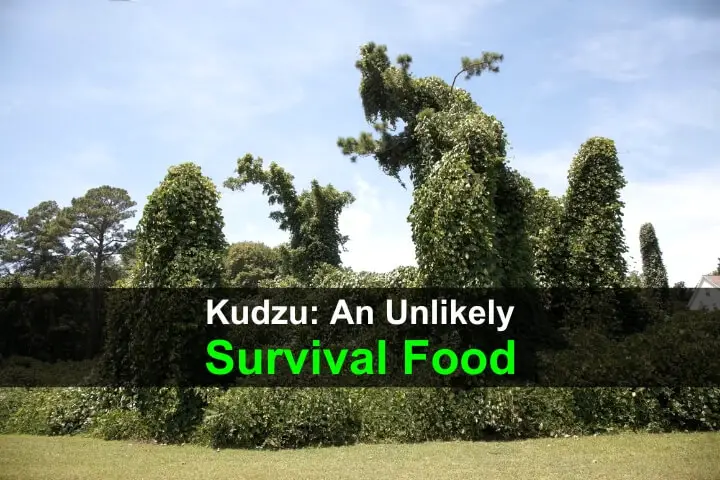Estimated reading time: 15 minutes
There are a lot of plants out there that have various and assorted medicinal, nutritional and other beneficial properties. And then there’s the trees. Think of them as plants on steroids. And that’s not only because of their size but the number of beneficial properties many trees possess.

Trees have often been referred to as the lungs of the Earth – they are. They inhale what we exhale and they exhale what we inhale. Trees also help to preserve the soil and protect it from erosion, help to maintain water in soil for surrounding plants, and even filter the water surrounding us. Trees are a primary home to many animals and are a critical part of the global ecosystem.
But on a more fundamental level, some trees are over-achievers and can literally save your life in a survival situation with diverse benefits.
Want to save this post for later? Click Here to Pin It On Pinterest!
The Basic Benefits of Trees

Beyond the global impact that trees have on the maintenance of our atmosphere; soil and water there are specific benefits that some trees possess that can not only help you in a survival situation, but actually save your life.
Survival circumstances can emerge in a variety of ways from recovering from a natural disaster to finding yourself lost or stranded on the road or in the wilderness. Anyone in survival mode has to be able to look around them to find resources in the environment to help them survive, and if there’s one thing that’s always around us -it’s trees.
Here are some of the general survival benefits of many trees and then we’ll get into the top 5 that deliver across all of these benefits.
Benefit #1: Shade

It seems obvious but as climate change sends our temperatures soaring the ability to find shade may be the only option to manage body temperature outside in a survival situation. Temperatures in the shade are always less than full sun and can be 10 to 20 degrees Fahrenheit lower depending on humidity levels.
Beyond the shade in summer is the protective canopy of pines in winter.

In a snowstorm the accumulation of snow under a pine is always less than under deciduous trees that have lost their leaves. The snow will eventually come down from the branches but as a short term shelter from snow it can offer some relief.
Benefit #2: Water

This isn’t about the ability of trees to filter and hold water in the ground, it’s about the ability of trees to provide drinking water. The water is found in the sap of trees and many trees are tapped to turn their sap into syrup. That can certainly help your survival but you don’t have to boil down the sap to drink it.
Tree sap directly from some trees is as hydrating as water and the natural sugars actually add a small amount of calories and nutrients. In fact, tree sap is actually sold as a beverage and is a bit expensive. In a survival situation you can tap some trees for sap when water is scarce –and it’s free.
As a general rule, avoid evergreen sap but many other trees from maples to birch to black walnut hold sap that’s safe to drink and can keep you alive when no other water is available. It’s also naturally filtered but should still be purified with a brief boil of at least 3-minutes.
Benefit #3: Heat

Wood burns and trees have no shortage of wood. Dead trees burn best but even green trees can burn if the fire is hot enough. All trees can be used in a fire to stay warm but some softwood trees like pine, poplar, and cypress burn the easiest and are best for starting a fire. The downside is that they burn fast.
Hardwood trees like oak, maple, black walnut and birch burn long and hot but can be slow to burn when a fire is first started.
Benefit #4: Shelter

There’s no shortage of ideas and examples of how wood has been used to create shelter. From the lumber used to build our homes to the logs and branches used to improvise survival shelters.
In any survival situation the wood from trees can be a critical resource. Even the bark can be used to create a waterproof roof on an improvised lean-to. Willow branches are flexible and can be used to craft everything from complex shelters to improvised furniture.
Benefit #5: Survival Tools

If you think about the tools we use today, how many of those tools have a wood component from axe handles to the handles and parts of just about any tool you can think of. But survival tools from wood go beyond the wooden handle on a hammer when the wood actually becomes the hammer.
Ancient people crafted tools from the digging stick believed to be the first tool ever made to the tools used for starting a fire; cordage made from strips of bark, pins to bind and hold larger pieces of wood together, even torches to light the night. When you see a forest you’re looking at nature’s hardware store and many trees can give you all the tools you need in a survival situation – even glue.
Benefit #6: Weapons

A digging stick may have been the first tool but a close second was the first weapon –a dagger. Close behind was a club made from a branch and ultimately some more complex variations including a bow and arrow, a spear with an attachment to increase its distance known as an atlatl, and even basic weapons like a dagger, fish spear, and torches to keep animals at bay and light the night.
Benefit #7: Food

We mentioned syrup made from sap but trees provide other food sources that are far easier to harvest including nuts and seeds like acorns and pine nuts. The Scandinavians have turned pine bark into flour for centuries and some of the oldest breads started with acorn flour.
Even the young leaves of maples, willows and oaks have found their way into artisanal salads at high-end restaurants. Eueel Gibbons had it right when he said, “Eat your trees.”
Benefit #8: Medicine

Many plants have medicinal properties and trees have their share of surprises. The bark from a willow tree makes a highly effective pain reliever. In fact, the salicin in willow bark is the primary ingredient in aspirin that is still used and made to this day.
Teas from pine needles, particularly white pine, and many other trees have proven to provide effective relief for coughs, colds and congestion.
The list of medicinal benefits from trees is long and we’ll highlight some of them in our top 5.
5 Trees with the Most Survival Benefits

It’s hard to narrow the list of trees to just 5 trees but we used some criteria to make the selection easier:
- Trees that are most commonly found across North America.
- Trees that are fairly easy to identify at all times of year.
- Trees that possess all 8 of the benefits we’ve defined.
- Trees that do not have toxic or poisonous properties in any part of the plant.
- Trees that have all parts of the plant low enough to the ground that they are easy to harvest.
There are a couple of trees that don’t quite satisfy all 8 benefits, but their other benefits are so significant they are included in the top 5. With that being said, here are the 5 trees that can keep you alive in a survival situation. We’ll highlight the survival benefits and also offer links to information on how to effectively take advantage of those benefits in a survival situation.
1. Oak

Oak trees are one of the most common trees on the planet and can grow in most any environment. They are often massive trees. In winter, looking at the ground under an oak will often present a carpet of dead leaves for identification. You may also see a lot of acorns.

Better yet, some oaks hold their dried, dead leaves even in winter. Here are the specific benefits and more information on how to survive under an oak tree.
2. Willow

Willows grow predominantly in wet areas along creeks and rivers and on the shores of ponds and lakes. They don’t quite satisfy all of the benefits for survival but their medicinal value is so significant that it can truly be a life-saver.

Willows are easy to identify at all times of year thanks to their long, drooping branches. Here are the specific benefits and more information on how to survive thanks to a willow tree.
- Water (sap) – Tree Sap (Note: the Romans drank willow sap and there are companies that sell it, but there are recommendations that the sap should not be consumed)
- Heat (firewood) – Willow is not the best firewood but it’s medicinal properties and overall flexibility make it an overall excellent survival tree) Does Willow Wood Make Good Firewood?
3. Birch

Birch trees are common in a deciduous forest and are easily identified at all times of year because of the striking contrast of their white bark. Here are the specific benefits and more information on how to survive from a birch tree.
4. Maple

Maples are another common tree across North America and often grow in groves as their helicopter seeds travel some distance on the wind to plant new maples.

The bark is one clue for identifying a maple in winter in addition to the leaf litter under the tree. Here are the specific benefits and more information on how to survive with the king of tree sap: maples.
5. White Pine

White pines are another common tree found around the world and like all evergreens, they are easy to identify at all times of year.

A common trait are the long needles apparent on all white pines. Here are the specific benefits and more information on how to survive in a forest of pines.
Embrace the Trees

It’s easy and obvious to think of many of the plants growing around us a primary source of nutrition and survival possibilities. Make sure you add trees to that mindset. One tree can supply significantly more than a field of plants on the ground and in desperate times, just might keep you alive.
Like this post? Don’t Forget to Pin It On Pinterest!



















